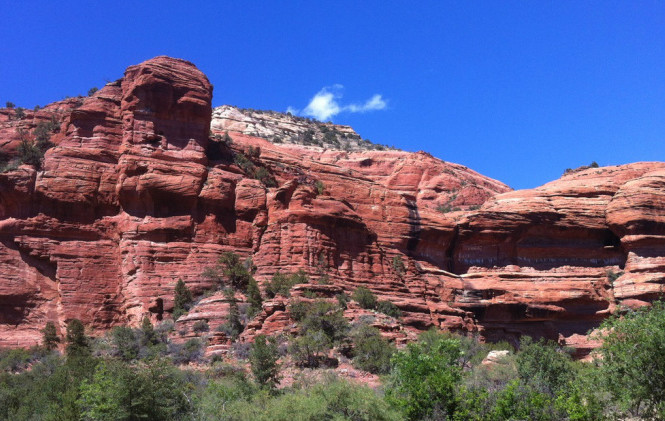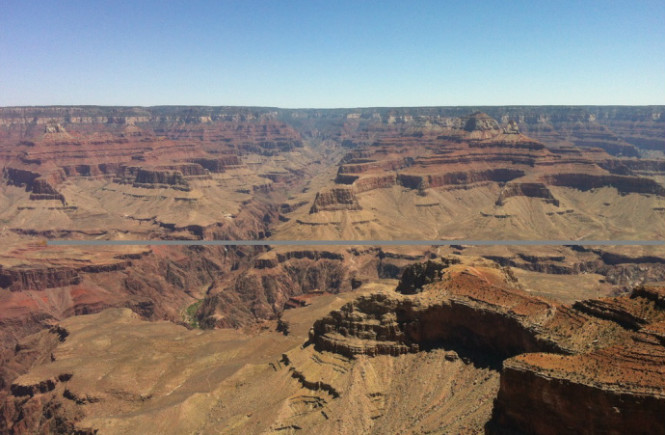I had crossed most of South Dakota, passing not far from Laura Ingalls Wilder’s little house on the prairie, paused in the Badlands, and was now heading into the Black Hills with the Beatles song “Rocky Raccoon” running through my head. I couldn’t resist a look at Mt. Rushmore – a fitting stop on my cross-America journey, nearly five years after becoming a citizen. The heads of Washington, Jefferson, Roosevelt and Lincoln loom out of the mountainside, audaciously carved by sculptor Gutzon Borglum between 1927 and 1941. Big art at a time when the country was getting bigger and bolder.
In the parking lot I see license plates from all over the union: Idaho, Florida, Illinois, Minnesota, Montana, Ohio, California, Alaska, Texas. Less than an hour from the desolate Badlands, the Black Hills are plastered with billboards, a tourism mecca for families on an American rite of passage, the summer pilgrimage to Mt. Rushmore and Yellowstone Park.
I think of other pilgrimages, like the Muslim haj in Saudi Arabia. And of ancient, larger-than-life sculptures hewn from rock, such as the temples of Luxor and Karnak in Egypt, and the Buddhas of Bamiyan in Afghanistan. All are religious, idols to gods. Even Stonehenge, possibly a burial site, is considered a spiritual destination.
Mt. Rushmore, on the other hand, is a paean to mortal men and is entirely secular. America worships an ideology – individual freedom paired with economic capitalism. There is nothing particularly spiritual in the experience of beholding Mt. Rushmore – though it is located in spectacular wilderness. Interestingly, the distance from which one views the presidential busts is far enough away that the experience is not overpowering and monumental, but rather subtle in its symbolism. It’s a photo op. It says, “We did it.” We built it, and now we visit it with our children. We honor the big and bold at this mountain.
I could not in good conscience see the four presidents and not visit the far more moving Crazy Horse Memorial site, an unfinished monument to a Battle of Little Big Horn Indian war hero, which is being carved into another piece of Black Hills rock face about 20 minutes from Mt. Rushmore.
Crazy Horse said, “My lands are where my dead lie buried,” a quote that is to be eventually carved on the statue of him on his horse pointing to Lakota territory. Crazy Horse, who reportedly never signed a treaty with the white man, was stabbed in the back by a U.S. federal guard while in custody. Or so the story goes, as recounted in the short film produced by the Crazy Horse Memorial Foundation.
It is a great story: In answer to Mt. Rushmore, Lakota Chief Henry Standing Bear wrote to invite Polish American sculptor Korczak Ziolkowski to carve a monument that will dwarf Mt. Rushmore in size, once completed.
“My fellow chiefs and I would like the white man to know the red man has great heroes also,” Standing Bear wrote, in his 1939 letter.
Ziolkowski started work in 1948, and devoted his life to the project, raising 10 children – seven of whom are still involved with it. He died in 1982 and his wife Ruth died just this past May. The sculptor staunchly refused federal funds or government aid of any type. The rock blasting, as well as a museum, a cultural center, and a fledgling Indian University of North America are all run by a non-profit foundation.

“The mission of Crazy Horse Memorial Foundation is to protect and preserve the culture, tradition and living heritage of the North American Indians,” says its brochure. A medical training center for American Indians is planned and there is even a memorial to 9/11 on the site.
It is an ambitious project with a slightly amateurish character, that feels like a fitting counterpoint to Mt. Rushmore, which is built and maintained by the federal government. But many in the Indian community originally opposed it, feeling that the mountainside was sacred and shouldn’t be disturbed.
The next morning, I had the good fortune to meet Candy Hamilton, a journalist and teacher originally from Tennessee, who arrived on the Pine Ridge reservation in 1973 to assist locals in dealing with the police and FBI during and after the protest occupation of Wounded Knee.
“I’m sure Crazy Horse rolls over in his grave whenever they dynamite the mountain,” Candy remarked to me.
She was also philosophical about the project ever being completed. “If they finish it, it would probably lose its appeal,” she said, implying that there is something about its underdog status that perpetuates a romanticism people like to have about native people – in this case, romanticizing Crazy Horse.
Candy came to Lakota territory and stayed 40 years, having recently retired to Rapid City. Meeting her made me want to return and explore Pine Ridge Reservation and the heritage of the indigenous people of our continent. The massive monuments may last longer than individual lives, but next time I will make a pilgrimage to the “Rez” for a live encounter with the beating heart of a people who have lived for centuries in those Badlands and Black Hills.







